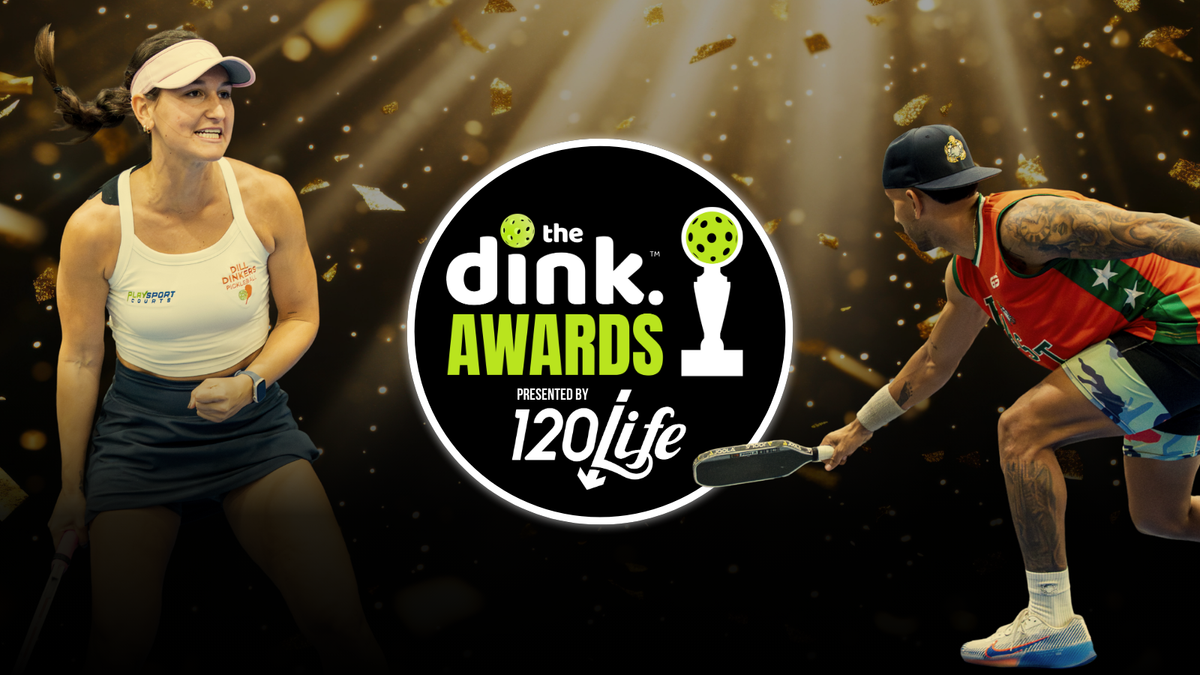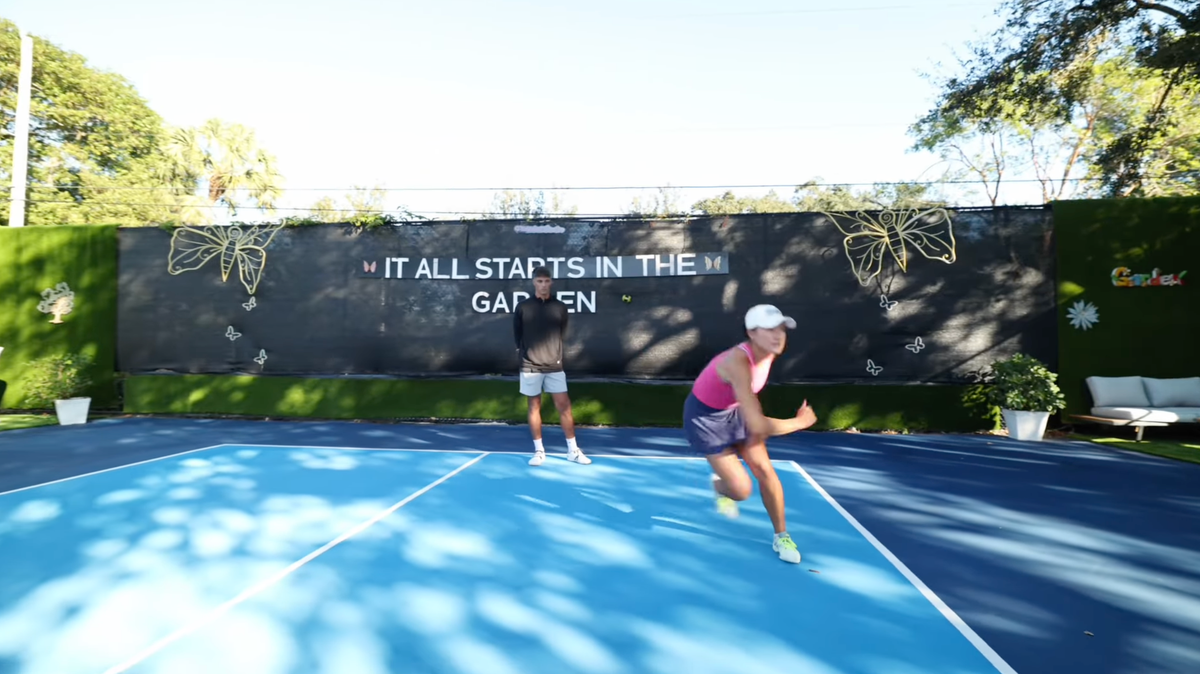Pickleball is a bit of Frankenstein's monster of the racquet and paddle sports world - a culmination of tennis, badminton, and table tennis. When it comes to grips, pickleball is clearly inspired by tennis, rarely borrowing styles from the other two sports. You could argue a pickleball paddle is closer to a ping pong paddle than a tennis racquet. This leads to the bigger question: are pickleball players missing out on the most popular grip in table tennis - the penhold grip?
The penhold grip in table tennis involves holding the paddle with thumb and index finger on one side and other fingers on the opposite side. This popular Asian grip style is also emerging in pickleball. It's best suited for forehand dinks but challenging for backhand or overhead shots.
While we're yet to see pros adopt this style, more and more players are trying the penhold grip out in pickleball. If you're thinking of giving it a shot, this article will arm you with all the details you need to do so. We'll cover the basics of the penhold grip, how and when you should consider using it, how it compares to more standard grips in pickleball, and our general thoughts on whether it's a good idea or not.
Everything Pickleball Players Need to Know About the Penhold Grip
Before we get much further, you should know that there are a ton of drawbacks to gripping the paddle in this manner. Some are nearly impossible to overcome. So in the instance that you don't make it much further in this article, we hope you don't leave here thinking everyone should use the penhold grip. From where we sit, the disadvantages outweigh the benefits of the grip for the majority of players. Now then, back to all the details you should know about this grip.
What Is the Difference Between Penhold Grip and Other Grips?
A penhold grip differs from more traditional grips in pickleball by the way the paddle is gripped from both faces rather than the handle. The second difference is how the grip excludes any use of your palms. While there are varying styles of penhold grip, they are known for creating spin and power forehands.
Visually, a couple of clues are dead giveaways on the court. First, you'll see the paddle flipped upside down quite a bit. You'll also notice players favoring their forehands and placing their index and thumb on one side, and some variation of the middle, ring, and pinky fingers extended on the back surface with specific spacing between the fingers.
When to Use Or Avoid the Penhold Grip in Pickleball
Because the penhold grip is so dependent on wrist action for power, shots that require less power and more precision are more appropriate for this grip. This means the penhold grip is better for playing closer to the kitchen rather than the baseline.
Consider Using Around the Kitchen
Forehand dinks are probably the best use case for the penhold grip. That's thanks to the three fingers on the back side of the paddle face. These fingers act as thrusters for your shot, which is heavily dependent on your wrist and forearm as well. This can create fantastic spin and short bursts of power to clear the net and dip down.
This also comes with a massive downside to backhand use. So if you decide to play with a penhold grip in the kitchen, you'll need to be able to quickly switch into continental to handle backhands and shots above your head. This also means that you'll need to position in a way to favor your forehand.
Pros of Penhold Grip
- Increased Control - The penhold grip allows you to have more control over the placement and spin of your shots.
- Solid at Close Range - Because it relies on wrist action rather than power, the penhold grip is ideal for close-range shots.
- Creates Dinks with Power, Speed, and Slice - With the flip of your wrist and a forearm extension, your forehand can pop the ball over with a serious spin. This maximizes a player's agility at the net.
Avoid at the Baseline
It's a tall chore to generate enough power from the baseline or playing back, to make the penhold grip a worthwhile option. Even the forehand is lacking. The one exception may be serving since you have more control of sending the ball, but even then, if you're trying to penhold grip a serve near the opposite baseline, power is going to be problematic.
Some players are capable of getting a ton of power and spin from this hold, but they're more the exception than the rule.
Cons of Penhold Grip
- Limited Backhand - Because of the grip and how your fingers extend on the backhand face of the paddle, making quick adjustments to get the correct angle for a backhand is extremely difficult. The best option is to switch grips, such as going to continental - this is a skill that few rec players possess.
- Less Overall Power - Generating power from the baseline or playing back is not easy with a penhold grip. Even on forehands where there's more control, you'll need to rely on your body and wrist action for generating spin and speed.
- Reduced Arm Reach - Since your fingers are extended on the backhand side, you lose some of the reach that is available with other grips - and as you reach across your body to hit a backhand, your reach is already contained.
- Wrist and Forearm Strain - Generating power and spin from the wrist can put a lot of strain on your forearm. It's important to condition these muscles before attempting a penhold grip. Additionally, if you feel pain or cramping, take a break and stretch out your arm.
Can Penhold Grip Be Used for Both Singles and Doubles Games?
The penhold grip could be used in either singles or doubles pickleball, but it's better suited for doubles because the player would need to cover less court while favoring their forehand. Additionally, doubles typically have more dinking, which is the best use of the penhold grip.
In singles, the challenges are more pronounced since you cover a wider area. You'll need to be able to quickly move and adjust your grip on the fly. If you decide to use the penhold for singles, it would be best to still reserve it for a dink exchange when you're on the defensive. But even then, there are far better options for grips when you play from behind.
How to Use Penhold Grip in Pickleball
There are clearly risks and rewards associated with a penhold grip, so let's clarify how to use it by quickly pointing out the technique and a few tips.
- Hold the paddle with your thumb and index finger on one side, and the other fingers on the opposite side.
- Keep your grip relaxed and flexible, allowing for greater wrist movement and reaction time.
- Stand with your feet shoulder-width apart and your knees slightly bent - this is your standard athletic stance that calls for weight to fall on the balls of your feet.
- Keep your non-dominant hand in front of your body to help with balance and positioning.
- When hitting forehand shots, use a circular motion with your wrist and arm to generate power and spin.
- When hitting backhand shots, try to use your body's natural motion to generate power, rather than relying solely on your arm and wrist.
Penhold Grip vs. Other Grips
Just about every player uses an eastern grip (including modified) and continental. Some will explore the western grip too, but within those three grip options, you'll find a solid 99.9% of pickleball players. Every grip has pros and cons. Let's quickly look at how the penhold compares to the most popular grips in pickleball
Eastern Grip vs. Penhold Grip
You know the handshake, it's the versatile grip that makes forehand and backhand transitions rather seamless. It's a neutral grip that's serviceable in just about any situation. The eastern grip gives you far greater reach and power than the penhold, while the penhold sacrifices those elements for more control. Because of the almost pincer-like hold on the paddle, the penhold grip is helpful for soft hands, naturally fostering greater control of the paddle.
The eastern grip also offers excellent stability with a dominant hand in front, making it easier to hit off-balance shots. Alternatively, the penhold prefers you to maintain your balance and make quick adjustments on the fly.
And clearly, there's a massive advantage in an eastern grip for backhand compared to the penhold grip.
Continental Grip vs. Penhold Grip
The continental grip is the antithesis of a penhold grip. Thanks to the bevel you hold the grip at, it angles the paddle face to create strong backhands. It's a poor choice for forehands though because the angle will be far too open - so chalk one point up for the penhold grip there.
Both excel at dinks.
The ability to switch between these two grips based on the situation could be a formidable combination, but we still strongly believe an eastern and continental adjustment is superior.
Western Grip vs. Penhold Grip
The western grip offers an advantage when you're hitting from behind or deep in the court. It's also useful for topspin and flat shots, but without the control of a penhold grip. Out of the three standard grips, the western plays closest to the penhold. The biggest difference is going to come from the power created in a western grip - the two aren't comparable there.
This wouldn't be a great combination on the court though - it would be like hitting a pitching mound with two pitches - a fastball and a faster ball.
The Penhold Is Fun, But Not for Winning
The penhold grip is fun to try at least once, especially in rec play, but it's an impractical choice when playing competitively. If you come from a table tennis background, you'll probably appreciate the wrist action that transfers.
Just be careful though, there's a big difference between a pickleball paddle and a ball to the equipment in table tennis. It's easy to injure yourself or overwork your muscles as a result.
The power and reach lost in transitioning from the more popular grips will often result in opponents taking advantage of your weaker shots. We wouldn't suggest using the penhold unless you've perfected your fundamentals with an eastern or continental grip.
That said, we still think it's never a bad idea to try something new. The worst case scenario is you'll know the pros and cons firsthand in case you play someone who uses this grip more consistently.
Anuncie Aqui / Advertise Here
Sua marca para o mundo Pickleball! / Your brand for the Pickleball world!

 English
English  Spanish
Spanish  Portuguese
Portuguese  German
German  Italian
Italian  Japanese
Japanese  French
French  Polish
Polish  Russian
Russian  Netherlands
Netherlands  Hungarian
Hungarian  Turkish
Turkish  Videos
Videos 







 English (US) ·
English (US) ·  Portuguese (BR) ·
Portuguese (BR) ·